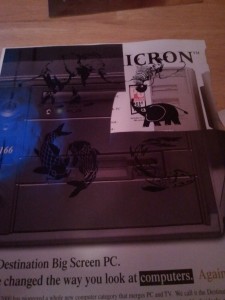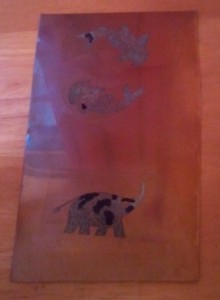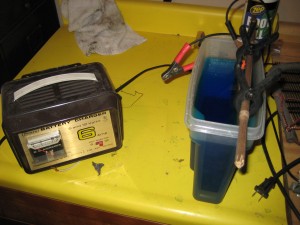The UW just won the world championships for iGEM. iGEM is the international Genetically Engineered Machine foundation. They sponsor yearly competitions where university undergraduates can compete to build interesting genetic components (biobricks).
This seems like such a fun competition. I’m kicking myself for not getting involved in it when I was an undergrad. The UW team this year came up with some amazing genetic circuits to generate diesel in e. coli and grow proteases that break down gluten (not at the same time, these are two different projects).
It looks like there are a lot of other interesting iGEM projects from other schools, so I’ll list some of the ones that I like the most.
Bioremediation
Many modern manufacturing techniques result, either directly or indirectly (accidently), in the release of toxic chemicals into the environment. Several methods exist for dealing with this, such as dispersing the chemicals or attempting to collect and store them elsewhere. These methods are often ineffective or partially effective, and can take years to show results.
Bioremediation, which involves the use of special cells that interact with pollution, may offer a more effective solution. Several iGEM projects deal with this in some way. Some of the projects specifically attempt to create cells that would remove pollutants, while other projects make cells more robust to pollution. The latter property would make the cells more suited to bioremediation.
Panama
The Panamanian team worked on a biobrick that synthesizes rhamnolipids. These are surfactants that decrease the surface tension of water, allowing spilled oil to be recovered more easily. This may at some point be a more effective way to produce surfactants than the one currently used.
NYC_Wetware
The NYC_Wetware team focused on providing cells with radiation resistance. The hope is that radiation resistance could be used for bioremediation after nuclear accidents.
Lethbridge
The Lethbridge team worked to create a kit to clean up tailings ponds. Tailings ponds are storage ponds where oil refineries store toxic waste. The current methods of dealing with these tailings ponds can take years. The tailings pond cleanup kit produced by Lethbridge uses synthetically produced proteins to metabolize toxic organic compounds. Some heavy metals were induced to form nanoparticles, which can be removed with the generated biomass. They also looked at increasing the sedimentation rates in the ponds using cells expressing a specific antigen.
Queens Canada
The Queens Canada team worked on making multicellular eukaryotic organisms that could break down several pollutants. They modified the C. elegans nematode to sense and move towards specific pollutants. The worms also had genes inserted to detect and degrade naphthalene.
Removing Antibiotic Resistance
Two teams worked on using the CRISPR genes on bacterial DNA. These genes act as an immune system for the bacteria, giving them resistance to external plasmids and phages. Antibiotic resistance in some bacteria is due to the CRISPR mechanism.
Georgia Tech
The Georgia Tech team worked to add CRISPR fitness to non-antibiotic resistant strains of bacteria. Their hope was that this would allow the non-antibiotic resistant bacteria to outcompete the antibiotic resistant bacteria.
USC
Plasmids are can cause horizontal antibiotic resistance transfer among bacteria. By giving bacteria CRISPR resistance to certain plasmids, the USC team plans to create bacteria that cannot receive antibiotic resistance in this way.
Optical Signaling
University of Pennsylvania
The University of Pennsylvania team developed two different strains of Human Embryonic Kidney cells. One of the strains was engineered to produce light at 480nm, while the other strain was engineered to respond to incident blue light by producing blue light itself.
Vitamin Producing Yeast
Synthetic biology has the ability to improve the foods that we eat and make them more nutritious. Brewer’s yeast, one of the primary cell types used in the iGEM competition, is also used in the food production industry for breads, beers, and other foods. Since it makes such a good chassis for engineered pathways and is useful in food production, it’s a good vector to deliver manufactured molecules to humans.
Two teams focused on making yeast more nutritious.
Johns Hopkins
The Johns Hopkins team, for example, added genes to produce vitamin A and vitamin C to yeast. They then performed baking experiments to determine how easy their new yeast was to use in cooking.
Washington University in St. Louis
The Washington University in St. Louis also inserted genes for vitamin A into yeast. They also looked at the production of a similar molecule used in perfume manufacture.
Glucose Detection
Missouri Miners
The Missouri Miners team worked on biobricks to detect glucose in various concentrations. This has the potential to decrease the cost of blood sugar monitoring and increase the quality of life of many diabetics. In the long term, it could also be used to cause cells to produce insulin in the presence of glucose, which could lead to a more permanent cure of the disorder.




